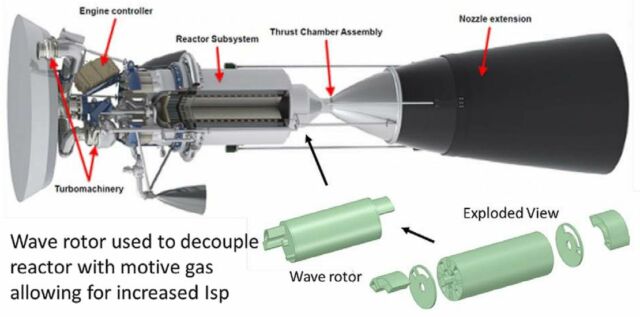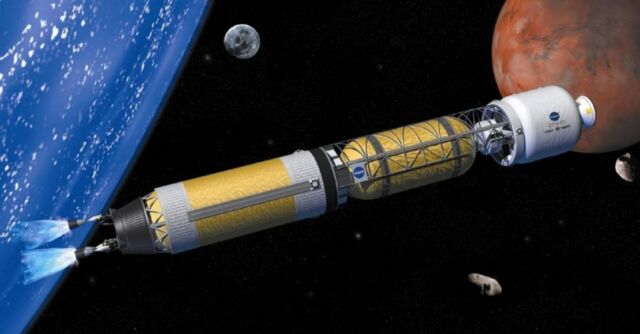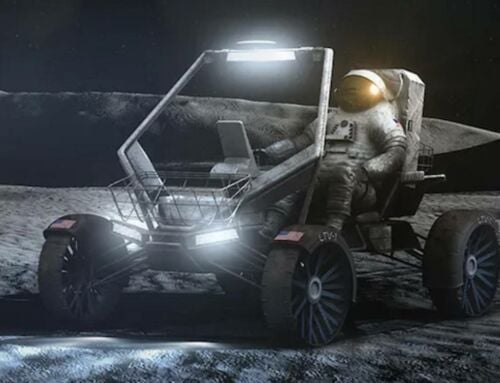A new nuclear rocket design could send missions – astronauts to Mars in just 45 days.
Nuclear Thermal Propulsion (NTP) is identified as the preferred propulsion technology for manned missions throughout the solar system.
Above: Artist’s concept of a bimodal nuclear rocket making the journey to the Moon, Mars, and other destinations in the Solar System. Credit NASA
The state-of-the-art NTP cycle is based on solid core Nuclear Engine for Rocket Vehicle Application (NERVA) class technology that is envisioned to provide a specific impulse (Isp) of 900 seconds doubling chemical rocket performance (450 seconds).
Even with this impressive increase, the NTP NERVA designs still have issues providing adequate initial to final mass fractions for high DeltaV missions.
 New Class of Bimodal NTP/NEP with a Wave Rotor Topping Cycle Enabling Fast Transit to Mars. Credits Ryan Gosse
New Class of Bimodal NTP/NEP with a Wave Rotor Topping Cycle Enabling Fast Transit to Mars. Credits Ryan Gosse
Nuclear Electric Propulsion (NEP) can provide extremely high Isp (>10,000 seconds) but with only low thrust and limits on mass-to-power ratios. The need for an electric power source also adds to the issue of heat rejection in space where thermal energy conversion is at best 30-40% under ideal conditions.
A novel Wave Rotor (WR) topping cycle is proposed that promises to deliver similar thrust as NERVA class NTP propulsion, but with Isp in the 1400-2000 second range. Coupled with a NEP cycle, the duty cycle Isp can further be increased (1800-4000 seconds) with minimal addition of dry mass. This bimodal design enables fast transit for manned missions (45 days to Mars) and revolutionizes the deep space exploration of our solar system.






Leave A Comment